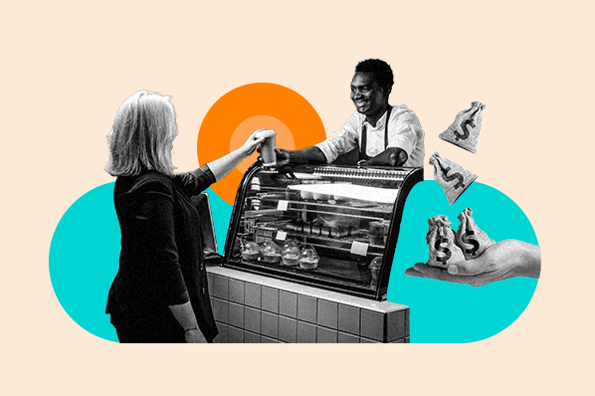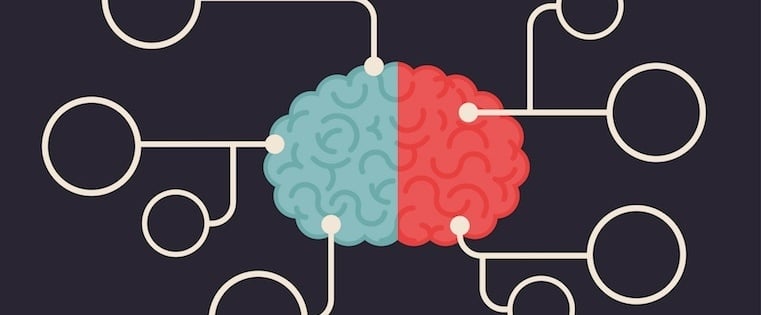Imagine a person sitting down to a lobster dinner in a restaurant. Have the image in your mind's eye? Good.

Now, what was your imaginary diner wearing? A collared shirt and dress pants? Or ripped jeans and a hoodie? Next, think of the restaurant you conjured up. Was it upscale? Or a local hole-in-the-wall?
Because lobster is considered "fancy" food, I'm willing to bet most of you pictured your diner decked out to the nines in an upscale eatery. Today, it goes without question that lobster means luxurious, high-quality, and valuable.
But it wasn't always this way. In the 17th century, lobster was fed to servants and prisoners. Even 200 years later, the shellfish cost less per pound than Boston baked beans, and was dished out to household cats.
So how in the world did lobster go from food fit for Fluffy to a desirable delicacy? According to the infographic below from Vouchercloud, a combination of scarcity and clever rebranding sent the crustaceans' value soaring.
Customer Perceived Value
Customer perceived value revolves around the customer’s belief that a product or service has the ability to meet their needs or expectations. This belief can impact demand and pricing for a product.
Let’s discuss the term "perception" — which describes one’s understanding or impression of a topic. If the benefit the customer expects to receive from the product is higher than the customer’s perceived cost, that product will have a positive customer perceived value. To maintain a high level of customer perceived value, a product must provide physical, logical, or emotional benefit for the customer.
.jpg?width=600&name=Customer-Perceived-Value%20(1).jpg)
So if a customer inherently believes a product is valuable, they may be more willing to pay a premium and/or experience enjoyment from purchasing or using the product. Let’s return to the lobster example.
This story contains an important lesson for both salespeople and marketers: What people perceive to be valuable largely hinges on psychological triggers. Scroll to the end of the image to discover the five main factors people use to determine value, and why we're sometimes willing to pay more for the exact same products.

Now let’s discuss how you can leverage customer perceived value to benefit your business.
1. Time
Time is a valuable commodity. In fact, working adults who spend money on time-saving purchases to outsource tedious or disliked tasks have greater overall life satisfaction than those who prioritize material spending. What does that mean? Consumers value their time more than things.
Even if you don’t necessarily sell an offering that can directly give consumers their time back (such as a service your customers can outsource to your company), you can focus on time-saving or convenience-related qualities of your product. Doing so can help you appeal to those who value their time, potentially increasing the customer’s perceived value of your product.
For example, let’s say you work for a company that sells payroll processing software, and your platform allows payroll administrators to cut their processing time in half compared to how long it took to use a competitor’s software. This time savings should be a major selling point, allowing customers to perceive your product as higher-value because of the time they will save by using it.
2. Price
Though customer perceived value focuses more on the perceived cost of the product than the hard cost, the price of a product is often a contributing factor in how a customer perceives its value.
Here are some perceived-value pricing strategies that can impact a business:
- Premium pricing — By charging a premium or consistently higher cost for products, a company’s products may seem more desirable to consumers because it creates an air exclusivity. For example, Apple consistently charges more for products such as the iPhone and Mac computers, which leads to their products being perceived as higher quality.
- Value pricing — Some companies focus on lower or more economically-priced products so customers believe they are getting a great deal. Because customers feel they are getting a great deal and still receive a quality product, the perceived value is high. A few brands that do this particularly well are Trader Joes, which sells its own brand products to keep prices low, and Costco, which sells products in bulk to keep costs down. Both brands pass savings to their customers through value pricing.
3. Reputation
A company’s reputation and overall sense of credibility can greatly impact customer perceived value. Brand reliability often has a positive effect on customer satisfaction, which can lead to brand loyalty. In addition to offering quality products and services, ere are a few factors to consider if you’re looking to improve in this area:
- Partner with trusted brands — If it suits your business, consider partnering with other companies that have a solid reputation and a similar customer base. Doing so (for say a cross-promotion) can improve your company’s reputation by association, increasing perceived value and exposing your product to a brand new audience.
- Rely on testimonials — The stories of satisfied customers are some of the best tools for communicating the quality of your products to prospects. Throughout the sales process, don’t be afraid to refer to the results of happy customers as you aim to win over new buyers. The ability to see real people using and benefiting from your product can have a major positive impact on perceived value.
- Make customer service a priority — Above all else, all buyers who interact with your brand should walk away having a positive experience (even if they decide not to buy just yet). You can have the best product in the world, but if a customer has a negative experience working with your company, your reputation can take a major hit, which can lower perceived value. With strong service, customers can begin building much-needed trust with your brand, setting them up to be your next success story.
When you understand what your customers value, you are better equipped to navigate the sale. Check out this post to learn more about the psychology of customer choice.






![7 Cognitive Biases Salespeople Must Know to Close Deals [Cheat Sheet]](https://blog.hubspot.com/hubfs/00-Blog_Thinkstock_Images/cognitive-biases-close-more-deals-cheatsheet-514637-edited.jpg)



![20 Weird Cognitive Biases Influencing Your Buyer's Decision [Infographic]](https://blog.hubspot.com/hubfs/biasstockphoto.jpg)
